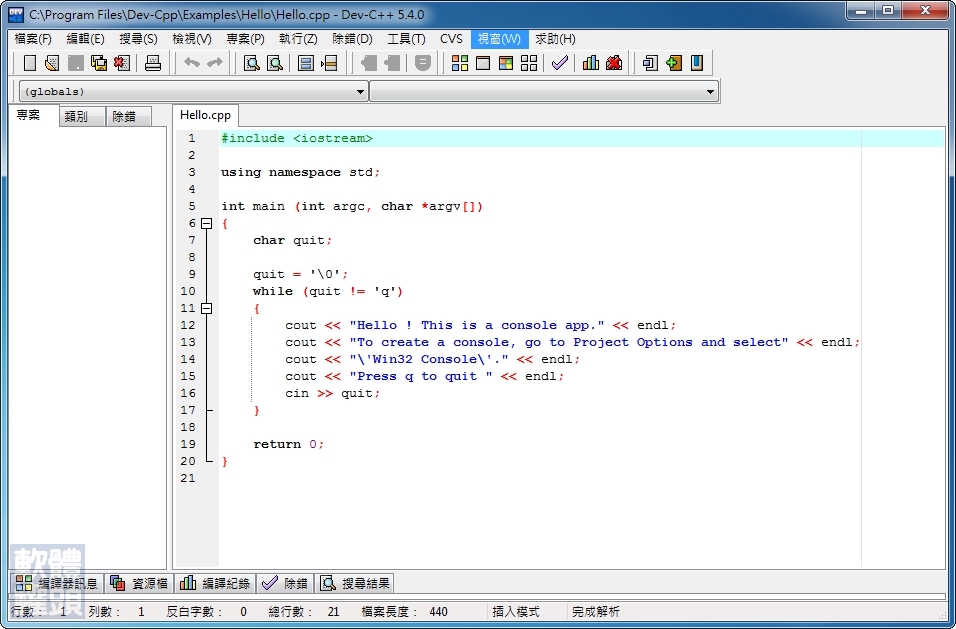Hello friends, this is a simple program to create a digital stopwatch. I am sure that even a beginner can understand it very easily. I have written this in c, so to use it c just change all cout statements with corresponding printf statements. I hope you understand what i want to say. If you Read More ». I am trying to add a timed delay in a C program, and was wondering if anyone has any suggestions on what I can try or information I can look at? I wish I had more details on how I am implementing this timed delay, but until I have more information on how to add a timed delay I am not sure on how I should even attempt to implement this.
C++ Classes/Objects
C++ is an object-oriented programming language.
Everything in C++ is associated with classes and objects, along with its attributes and methods. For example: in real life, a car is an object. The car has attributes, such as weight and color, and methods, such as drive and brake.
Attributes and methods are basically variables and functions that belongs to the class. These are often referred to as 'class members'.
A class is a user-defined data type that we can use in our program, and it works as an object constructor, or a 'blueprint' for creating objects.
Create a Class
To create a class, use the class keyword:
Example
Create a class called 'MyClass':
public: // Access specifier
int myNum; // Attribute (int variable)
string myString; // Attribute (string variable)
};
Example explained
- The
classkeyword is used to create a class calledMyClass. - The
publickeyword is an access specifier, which specifies that members (attributes and methods) of the class are accessible from outside the class. You will learn more about access specifiers later. - Inside the class, there is an integer variable
myNumand a string variablemyString. When variables are declared within a class, they are called attributes. - At last, end the class definition with a semicolon
;.
Create an Object
In C++, an object is created from a class. We have already created the class named MyClass, so now we can use this to create objects.
To create an object of MyClass, specify the class name, followed by the object name.
To access the class attributes (myNum and myString), use the dot syntax (.) on the object:
Example
Create an object called 'myObj' and access the attributes:
public: // Access specifier
int myNum; // Attribute (int variable)
string myString; // Attribute (string variable)
};
int main() {
MyClass myObj; // Create an object of MyClass
// Access attributes and set values
myObj.myNum = 15;
myObj.myString = 'Some text';
// Print attribute values
cout << myObj.myNum << 'n';
cout << myObj.myString;
return 0;
}
Multiple Objects

You can create multiple objects of one class:
Example
class Car {
public:
string brand;
string model;
int year;
};
int main() {
// Create an object of Car
Car carObj1;
carObj1.brand = 'BMW';
carObj1.model = 'X5';
carObj1.year = 1999;
// Create another object of Car
Car carObj2;
carObj2.brand = 'Ford';
carObj2.model = 'Mustang';
carObj2.year = 1969;
// Print attribute values
cout << carObj1.brand << ' ' << carObj1.model << ' ' << carObj1.year << 'n';
cout << carObj2.brand << ' ' << carObj2.model << ' ' << carObj2.year << 'n';
return 0;
}
Hello friends, this is a simple program to create a digital stopwatch. I am sure that even a beginner can understand it very easily. I have written this in c++, so to use it c just change all cout statements with corresponding printf statements. I hope you understand what i want to say. If you have any kind of problem in doing this then let me know by commenting below, i will try my best to help you. So just try this and share your experience with me.
Also Read: C++ Program to create an Analog Clock
Also Read: C++ Hotel Management Project
#include<conio.h>
#include<process.h>
#include<iostream.h>
#include<dos.h>
int h=0,m=0,s=0,ms=0;
char ch=’p’;
void main()
{
void watch();
watch();
Delay In Dev C++
while(1)
{
if(kbhit())
ch=getch();
if(ch’s’||ch’S’)
break;
if(ch’e’||ch’E’)
exit(0);
}
Using Delay In Dev C++ Download
while(1)
{
watch();
delay(10);
Using Delay In Dev C++ Latest
if(kbhit())
ch=getch();
if(ch’r’||ch’R’)
{
h=m=s=ms=0;
watch();
while(1)
{
if(kbhit())
ch=getch();
if(ch’s’||ch’S’)
break;
if(ch’e’||ch’E’)
exit(0);
}
}
else
if(ch’p’||ch’P’)
while(1)
{
if(kbhit())
ch=getch();
if(ch’s’||ch’S’)
break;
if(ch’e’||ch’E’)
exit(0);
if(ch’r’||ch’R’)
{
ch=’c’;
h=m=s=ms=0;
watch();
}
}
else
if(ch’e’||ch’E’)
exit(0);
if(ms!=99)
ms++;
else
{
ms=0;
if(s!=59)
s++;
else
{
s=0;
if(m!=59)
m++;
else
{
m=0;
h++;
}
}
}
}
}
void watch()
{
clrscr();
cout<<“nnnnntttt#############”;
cout<<“ntttt# Stopwatch #”;
cout<<“ntttt#############”;
cout<<“nntttt “<<h<<“:”<<m<<“:”<<s<<“:”<<ms;
cout<<“nnnnnnnnntttttttPress Key”;
cout<<“nttttttt———“;
cout<<“nttttttts -> Start”;
cout<<“ntttttttp -> Pause”;
cout<<“ntttttttr -> Reset”;
cout<<“nttttttte -> Exit”;
}